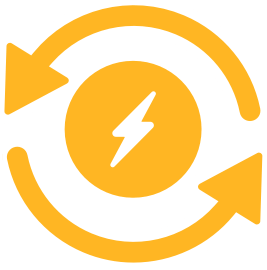| Topic: Quantum Mechanics Introduction | |
|---|---|
|
A light quanta encounters a particle. It does not continue through the particle at c, so something happens that causes it to take longer to get from one side of the particle to the other than it would if there were no particle.
As I see it, there are only two options: 1) The light quanta actually slows down, which would violate the theory of relativity as I understand it. 2) The light quanta "disappears" (or is altered) for a time and then "reappears" (altered back to it's original state) - which in my book, would qualify as "absorption and retransmission". |
|
|
|
|
|
**This topic has been cleaned up a bit. Please find a way to state your opinions/theories without personal insults.**
Great topic, BTW! 
|
|
|
|
|
|
**This topic has been cleaned up a bit. Please find a way to state your opinions/theories without personal insults.** Great topic, BTW! 
Thank you lillbug! |
|
|
|
|
|
**This topic has been cleaned up a bit. Please find a way to state your opinions/theories without personal insults.** Great topic, BTW! 
Thank you lillbug! You're welcome!  Any topic that starts with 'quantum' already is wa-a-a-y over my head, Any topic that starts with 'quantum' already is wa-a-a-y over my head,  but I enjoyed all the pretty pictures! but I enjoyed all the pretty pictures! 
|
|
|
|
|
|
Edited by
Bushidobillyclub
on
Tue 08/25/09 03:38 PM
|
|
|
Two great videos for laymen, this was the physics for future presidents course at UC Berkley and I have not watched the whole thing but my professor has met Richard Mueller and always speaks highly of him. Perhaps these two videos would help, the course was designed for NON physics majors who are interested.
http://www.youtube.com/watch?v=Z0exIzsKuq8&feature=PlayList&p=DE0461C8581CD884&index=12 http://www.youtube.com/watch?v=SJIvvvJg1Io&feature=PlayList&p=DE0461C8581CD884&index=7 These where the videos on light, there are a bunch of other ones you can check the UC Berkley page for all of them. I think 43 for this course in total. The whole course >> http://www.youtube.com/view_play_list?p=DE0461C8581CD884&search_query=physics+lectures |
|
|
|
|
|
A light quanta encounters a particle. It does not continue through the particle at c, so something happens that causes it to take longer to get from one side of the particle to the other than it would if there were no particle. As I see it, there are only two options: 1) The light quanta actually slows down, which would violate the theory of relativity as I understand it. 2) The light quanta "disappears" (or is altered) for a time and then "reappears" (altered back to it's original state) - which in my book, would qualify as "absorption and retransmission". I realized there is another option here - the light quanta travels farther. That is, if the particle somehow changes the direction of travel of the light quanta, it would naturally take longer to get from "entrance" to "exit". And after viewing the first half of the leture #12 above, it seems that this may be the most accurate description. Kinda like the particle says "Ok, now you're in my territory and you're gonna have to jump through a few hoops and run an obstacle course before I let you out." The light quanta jumps through the hoops and runs the obstacle course at c, but it still takes more time to do that than it would to run striaght through without any detours. Am I making sense? |
|
|
|
|
|
A light quanta encounters a particle. It does not continue through the particle at c, so something happens that causes it to take longer to get from one side of the particle to the other than it would if there were no particle. As I see it, there are only two options: 1) The light quanta actually slows down, which would violate the theory of relativity as I understand it. 2) The light quanta "disappears" (or is altered) for a time and then "reappears" (altered back to it's original state) - which in my book, would qualify as "absorption and retransmission". I realized there is another option here - the light quanta travels farther. That is, if the particle somehow changes the direction of travel of the light quanta, it would naturally take longer to get from "entrance" to "exit". And after viewing the first half of the leture #12 above, it seems that this may be the most accurate description. Kinda like the particle says "Ok, now you're in my territory and you're gonna have to jump through a few hoops and run an obstacle course before I let you out." The light quanta jumps through the hoops and runs the obstacle course at c, but it still takes more time to do that than it would to run striaght through without any detours. Am I making sense? |
|
|
|
|
|
A light quanta encounters a particle. It does not continue through the particle at c, so something happens that causes it to take longer to get from one side of the particle to the other than it would if there were no particle. As I see it, there are only two options: 1) The light quanta actually slows down, which would violate the theory of relativity as I understand it. 2) The light quanta "disappears" (or is altered) for a time and then "reappears" (altered back to it's original state) - which in my book, would qualify as "absorption and retransmission". I realized there is another option here - the light quanta travels farther. That is, if the particle somehow changes the direction of travel of the light quanta, it would naturally take longer to get from "entrance" to "exit". And after viewing the first half of the leture #12 above, it seems that this may be the most accurate description. Kinda like the particle says "Ok, now you're in my territory and you're gonna have to jump through a few hoops and run an obstacle course before I let you out." The light quanta jumps through the hoops and runs the obstacle course at c, but it still takes more time to do that than it would to run striaght through without any detours. Am I making sense? ohhhh now we're getting into scattering Raylie scattering Mie scattering and my personal fav, anisotropic scattering |
|
|
|
|
|
A light quanta encounters a particle. It does not continue through the particle at c, so something happens that causes it to take longer to get from one side of the particle to the other than it would if there were no particle. As I see it, there are only two options: 1) The light quanta actually slows down, which would violate the theory of relativity as I understand it. 2) The light quanta "disappears" (or is altered) for a time and then "reappears" (altered back to it's original state) - which in my book, would qualify as "absorption and retransmission". I realized there is another option here - the light quanta travels farther. That is, if the particle somehow changes the direction of travel of the light quanta, it would naturally take longer to get from "entrance" to "exit". And after viewing the first half of the leture #12 above, it seems that this may be the most accurate description. Kinda like the particle says "Ok, now you're in my territory and you're gonna have to jump through a few hoops and run an obstacle course before I let you out." The light quanta jumps through the hoops and runs the obstacle course at c, but it still takes more time to do that than it would to run striaght through without any detours. Am I making sense? ohhhh now we're getting into scattering Raylie scattering Mie scattering and my personal fav, anisotropic scattering |
|
|
|
|
|
A light quanta encounters a particle. It does not continue through the particle at c, so something happens that causes it to take longer to get from one side of the particle to the other than it would if there were no particle.
As I see it, there are only two options: 1) The light quanta actually slows down, which would violate the theory of relativity as I understand it. 2) The light quanta "disappears" (or is altered) for a time and then "reappears" (altered back to it's original state) - which in my book, would qualify as "absorption and retransmission". I realized there is another option here - the light quanta travels farther. That is, if the particle somehow changes the direction of travel of the light quanta, it would naturally take longer to get from "entrance" to "exit". And after viewing the first half of the leture #12 above, it seems that this may be the most accurate description. Kinda like the particle says "Ok, now you're in my territory and you're gonna have to jump through a few hoops and run an obstacle course before I let you out." The light quanta jumps through the hoops and runs the obstacle course at c, but it still takes more time to do that than it would to run striaght through without any detours. Am I making sense? |
|
|
|
|
|
it is perfectly valid to think of/treat the photon as a wave because it is a wave. an electromagnetic wave.
|
|
|
|
|
|
Two great videos for laymen, this was the physics for future presidents course at UC Berkley and I have not watched the whole thing but my professor has met Richard Mueller and always speaks highly of him. Perhaps these two videos would help, the course was designed for NON physics majors who are interested. http://www.youtube.com/watch?v=Z0exIzsKuq8&feature=PlayList&p=DE0461C8581CD884&index=12 http://www.youtube.com/watch?v=SJIvvvJg1Io&feature=PlayList&p=DE0461C8581CD884&index=7 These where the videos on light, there are a bunch of other ones you can check the UC Berkley page for all of them. I think 43 for this course in total. The whole course >> http://www.youtube.com/view_play_list?p=DE0461C8581CD884&search_query=physics+lectures Finally some videos for non physic majors. Thanks Jeremy 
|
|
|
|
|
|
Edited by
Bushidobillyclub
on
Tue 08/25/09 08:26 PM
|
|
|
What needs to be specific is the particular phenomena being discussed.
If we are talking about electrons striking a metal plate and creating x rays, then yes abra's description was decent. If we are talking about light say moving through the glass of your car window and loosing speed, and energy then not so much. Physics is great, but many times less words and more specificity can help. Light does slow down, as all waves do, this IS the feature that makes refraction possible. When one part of the wave is slowed first becuase of a lower then 90 degree strike then one side of the wave enters the glass first and is slowed first, this changes the direction of the wave just like your car, just like the water waves, just like sound waves being bent around corners . . . waves is waves and the phenomena share characteristics. Relativity does not set a lower limit for light, only an upper limit. These are things as I understand them, as I have been taught and had confirmed by paid professionals this vary day. From reading metalwings response I find no deviation in understanding. |
|
|
|
|
|
The WAVE properties of the light interact with the electric/atomic fields of the matrix of matter and channel the light into a tighter path increasing the frequency. The energy that a light particle contains is a function of the frequency so, to conserve momentum, the light wave slows down.
Very articulate explanation. Thank you.
The matrix of the matter is mostly empty space so some materials have the property to allow light to pass through the matrix, and some don't. Those that do are described by the refractive index. The higher the index, the more condensed the wave pattern and the slower the light travels. What channels the light is, in effect, close quantum wave interaction (call it glancing blows) with the matter as the light is channeled down the paths between the atoms. |
|
|
|
|
|
Light does slow down, as all waves do, this IS the feature that makes refraction possible. When one part of the wave is slowed first becuase of a lower then 90 degree strike then one side of the wave enters the glass first and is slowed first, this changes the direction of the wave just like your car, just like the water waves, just like sound waves being bent around corners . . . waves is waves and the phenomena share characteristics. Yes, I understand that concept. That's the easy part. But as with all analogies, it eventually falls apart, since it can only ba an approximation.
But the thing I'm trying to think with is way below that, as illustrated by the question "What connects the two 'sides' of the wave? Does the wave have a differential axle that connects the two sides so that one side can travel faster than the other without breaking the connection? It sounds like there is some internal, supraluminal transfer of information.  Just ramblin' Just ramblin' 
|
|
|
|
|
|
Light does slow down, as all waves do, this IS the feature that makes refraction possible. When one part of the wave is slowed first becuase of a lower then 90 degree strike then one side of the wave enters the glass first and is slowed first, this changes the direction of the wave just like your car, just like the water waves, just like sound waves being bent around corners . . . waves is waves and the phenomena share characteristics. Yes, I understand that concept. That's the easy part. But as with all analogies, it eventually falls apart, since it can only ba an approximation.
But the thing I'm trying to think with is way below that, as illustrated by the question "What connects the two 'sides' of the wave? Does the wave have a differential axle that connects the two sides so that one side can travel faster than the other without breaking the connection? It sounds like there is some internal, supraluminal transfer of information.  Just ramblin' Just ramblin' 
|
|
|
|
|
|
Light does slow down, as all waves do, this IS the feature that makes refraction possible. When one part of the wave is slowed first becuase of a lower then 90 degree strike then one side of the wave enters the glass first and is slowed first, this changes the direction of the wave just like your car, just like the water waves, just like sound waves being bent around corners . . . waves is waves and the phenomena share characteristics. Yes, I understand that concept. That's the easy part. But as with all analogies, it eventually falls apart, since it can only ba an approximation.
But the thing I'm trying to think with is way below that, as illustrated by the question "What connects the two 'sides' of the wave? Does the wave have a differential axle that connects the two sides so that one side can travel faster than the other without breaking the connection? It sounds like there is some internal, supraluminal transfer of information.  Just ramblin' Just ramblin' 
...just like your car...
|
|
|
|
|
|
Edited by
AndyBgood
on
Tue 08/25/09 10:40 PM
|
|
|
Well then I got a question that has been bugging the heck out of me. It is a lot more complicated than I can actually explain so please bear with me...
Now Eisensteinian Physics says the closer to the speed of light an object gets that time distorts more and when you hit C Time stops. Now time is a wave (IN THE LOOSEST SENSE, YES I KNOW) and likewise an Electron exists in both states. It has mass we can define and a size and a wave we can measure. Granted Einsteinian Physics breaks down at C. Mass becomes infinite. In essence when time stops mass overwhelms the equation. To me that means that mass becoming infinite would displace the universe. Could it be that an Electron because its mass and speed is displacing the fabric of space (COUGH COUGH /TIME) in its probability shell (atomic orbital) rather than be a sphere as we usually picture them in an atom moving randomly in the probability shell? In basic chem we went over probability shells but something about the way they are shaped sort of emulates phenomenon in nature. The Torus, Black hole Phenomenon and the teardrop which is like the jets from the black hole sort of. 3D and 4F The rest are spherical to some extent. Now depending on how mass is treated if it is fluid a torus can form when a gravidic influence affects it ie, galactic disks, rings around planets when mass has motion. A Black Hole is nothing more than a giant Magnetron once you get past its core being a all consuming God like thing everyone gets all terrified of needlessly! you can cook a meal with the x-rays they throw off! God has to heat his left overs some how! |
|
|
|
|
|
Edited by
tngxl65
on
Tue 08/25/09 10:56 PM
|
|
|
But the thing I'm trying to think with is way below that, as illustrated by the question "What connects the two 'sides' of the wave? Does the wave have a differential axle that connects the two sides so that one side can travel faster than the other without breaking the connection? It sounds like there is some internal, supraluminal transfer of information. Yes, this is the part I struggle with. I understand why the car turns.... one side slows before the other and the car, because both sides are connected, turns. But I don't think of light as 'connected' so I don't think the car analogy works. I'm still absorbing the wave picture that was posted earlier though. That makes sense to me, I just can't decide if it's representative. |
|
|
|
|
|
Edited by
Bushidobillyclub
on
Wed 08/26/09 09:28 AM
|
|
|
I think the part most people struggle with (including myself) is trying to visualize the electromagnetic field.
Let me ask you this. What connects the north and south pole of a magnetic field? The same question as what connects one side of the light wave to the other. The thing to also remember is that electrons interact with the electromagnetic field and repel each other. The electrons that are in the rubber of the tire on your car interact via the electromagnetic field with the electrons in the pavement, and the electrons in the side of the road that has a different friction ratio are also due to the interactions between electrons. We live in an electronic universe, the interactions of electrons and the EM field give rise to IMHO 90+% of the daily phenomena we observe. |
|
|
|
|












